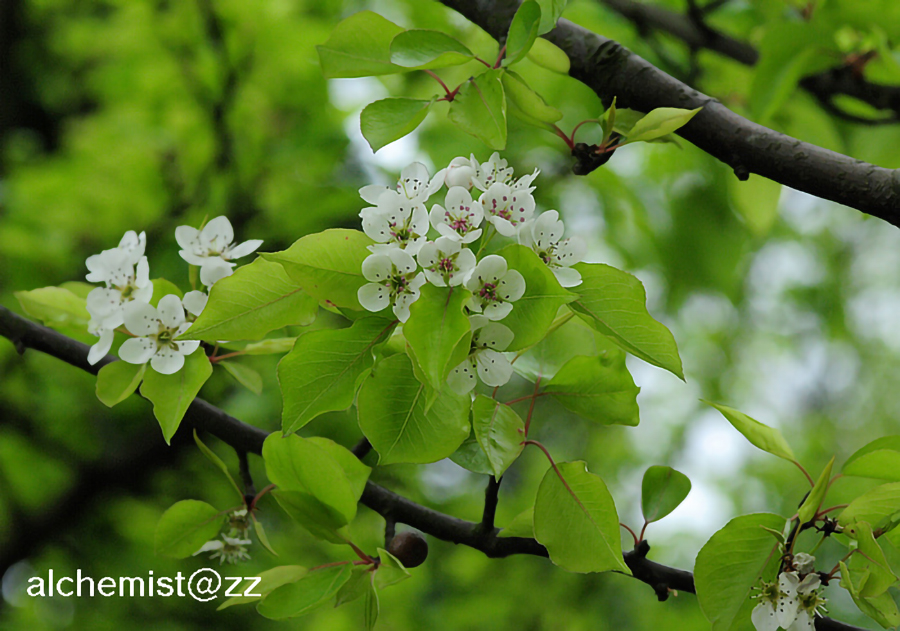- Scientific Name: Pyrus calleryana Decaisne
- Ref: Jard. Fruit. 1: 329. 1871.
- English Common Name: Callery pear
- Chinese Common Name: 豆梨 dòulí
- Family: Rosaceae
- Genus: Pyrus
- Distribution: Slopes, plains, mixed valley forests, thickets; 100–1800 m. Anhui, Fujian, Guangdong, Guangxi, Henan, Hubei, Hunan, Jiangsu, Jiangxi, S Shaanxi (Qin Ling), Shandong, Taiwan, Zhejiang [Japan, Vietnam].
Trees 5–8 m tall. Branchlets reddish brown when young, grayish brown when old, terete, initially tomentose, soon glabrescent, glabrous when old; buds triangular-ovoid, sparsely tomentose, apex shortly acuminate. Stipules caducous, linear-lanceolate, 4–7 cm, herbaceous, glabrous, margin entire, apex acuminate; petiole 2–4 cm, glabrous; leaf blade broadly ovate or ovate, rarely narrowly elliptic, 4–8 × 3.5–6 cm, glabrous, base rounded or broadly cuneate, margin obtusely serrate, apex acuminate, rarely acute. Raceme umbel-like, 6–12-flowered; peduncle glabrous; bracts caducous, linear-lanceolate, 0.8–1.3 cm, membranous, adaxially tomentose, margin initially glandular serrate, apex acuminate. Pedicel 1.5–3 cm; glabrous. Flowers 2–2.5 cm in diam. Hypanthium cupular, glabrous. Sepals lanceolate, ca. 5 mm, abaxially glabrous, adaxially tomentose, margin entire, apex acuminate. Petals white, ovate, ca. 1.3 × 1 cm, base shortly clawed, apex rounded. Stamens 20, slightly shorter than petals. Ovary 2(-4)-loculed, with 2 ovules per locule; styles 2(-4), nearly as long as stamens, glabrous basally. Pome blackish brown with pale dots, globose, ca. 1 cm in diam., 2(or 3)-loculed; sepals caducous; fruiting pedicel 1.5–3 cm, glabrous. Fl. Apr, fr. Aug–Sep. 2n = 34*. (Flora of China)
